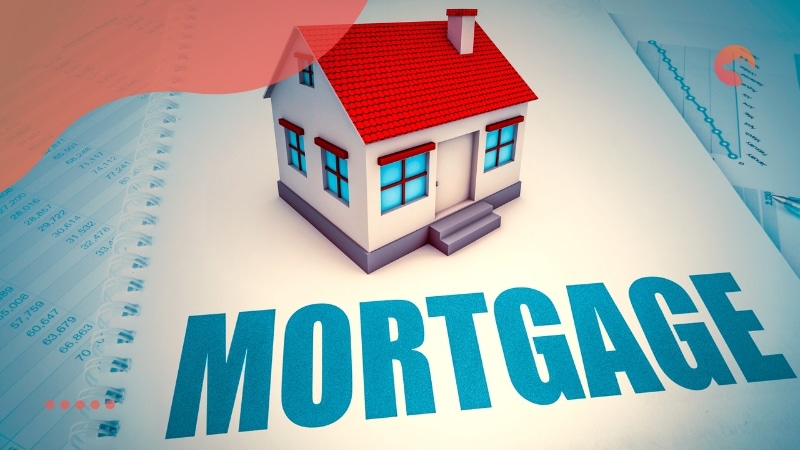How to refinance a mortgage effectively depends on understanding the process, potential benefits, and the right timing.
For many, the concept of mortgage refinancing may seem complex, filled with unfamiliar terms and financial jargon. However, learning how to refinance a mortgage can help you achieve financial stability and increase savings in the long term.
In today’s fluctuating economic landscape, how to refinance a mortgage becomes even more crucial. Whether you’re looking to lower your interest rate, change your loan type, or tap into your home equity, refinancing provides a pathway to better financial health.
What Does Refinancing Involve?

Refinancing a mortgage means replacing your existing loan with a new one. This process requires a fresh application, a review of your credit history, and often an appraisal of your property.
Homeowners choose to refinance for a variety of reasons, including changing the loan term, securing a lower interest rate, or switching from an adjustable-rate mortgage (ARM) to a fixed-rate mortgage.
Each of these goals requires a different approach, so it’s essential to be clear on your primary motivation for refinancing.
For example, switching from an ARM to a fixed-rate mortgage may stabilize your payments, particularly if you’re concerned about rising interest rates.
On the other hand, reducing the loan term from 30 years to 15 years could increase your monthly payments but save you substantial interest over time. Therefore, identifying your main refinancing goal is the first and most important step in the process.
The Cost of Refinancing
While refinancing offers savings, it also comes with costs. Typical expenses include closing costs, appraisal fees, title insurance, and sometimes loan origination fees.
These costs can vary based on the lender, your location, and the complexity of the refinancing. Many lenders offer “no-closing-cost” refinancing options, but these generally come with higher interest rates to compensate.
To determine whether refinancing is worthwhile, it’s important to calculate the breakeven point, which is the time it takes for savings from a lower rate to offset the costs of refinancing. If you plan to stay in your home beyond this breakeven point, refinancing can be a smart financial decision.
Calculating Your Breakeven Point (How to refinance a mortgage)
To calculate the breakeven point, divide the total refinancing costs by the monthly savings you would achieve with a lower interest rate.
For instance, if your refinancing costs amount to $4,000 and your monthly savings are $150, your breakeven point would be approximately 27 months. Staying in your home beyond this period means you begin to save on your mortgage, making the refinancing worthwhile.
Using Calculators to Estimate Savings on Your Mortgage Refinance
When exploring how to refinance a mortgage, a critical part of the decision-making process is estimating potential savings. Calculators can help you quickly assess how much a new interest rate or loan term could impact your monthly payments and total interest.
By using reliable online tools like Calculator.io, you can input your loan details and get an immediate breakdown of potential savings.
This enables you to make an informed choice on whether refinancing aligns with your financial goals and helps you to project long-term benefits, giving you confidence in your refinancing strategy.
Types of Mortgage Refinancing Options
1. Rate-and-Term Refinance (How to refinance a mortgage)
The rate-and-term refinance is the most common type of refinancing, where the goal is to obtain a new loan with either a lower interest rate, a different term, or both.
This option is ideal for homeowners who want to reduce their monthly payments or shorten their loan term.
Lower interest rates can lead to considerable savings over the life of the loan, while a shorter term, such as switching from a 30-year mortgage to a 15-year mortgage, can significantly reduce the total interest paid.
2. Cash-Out Refinance
A cash-out refinance allows you to borrow more than what you currently owe on your mortgage, using the additional funds for purposes such as home improvements, paying off high-interest debt, or even investing.
This option is suitable if you have substantial home equity and are confident that the new debt can be managed alongside your financial goals.
However, a cash-out refinance increases the loan balance, and in some cases, could result in higher monthly payments, so it’s essential to use the funds wisely.
3. Streamlined Refinancing Options (How to refinance a mortgage)
Some lenders, as well as programs like FHA and VA loans, offer streamlined refinancing. This option is designed to simplify the refinancing process by requiring less documentation and, often, skipping the property appraisal.
Streamlined refinancing can be an attractive option if you’re eligible, as it reduces the time and cost involved in refinancing, making it a faster way to take advantage of lower interest rates.
Choosing the Best Mortgage Lenders for Your Refinancing Needs
When considering how to refinance a mortgage, selecting the right lender is one of the most critical steps in the process. The lender you choose will directly impact your interest rate, loan terms, and overall refinancing experience.
Refinancing with the best mortgage lenders can provide competitive rates and favorable terms, allowing you to maximize the financial benefits of refinancing.
The best lenders often offer a variety of mortgage products tailored to different financial situations, making it easier to find a refinancing solution that aligns with your goals.
By working with a reputable lender, you’ll be better equipped to navigate the refinancing process, from comparing rates to finalizing terms, ensuring you achieve the most favorable outcome.
The Step-by-Step Refinancing Process
1. Assess Your Financial Health
Before considering refinancing, check your credit score, income, debt-to-income ratio, and the equity in your home. A good credit score can improve your chances of securing favorable rates.
Mortgage lenders will also examine your debt-to-income ratio, which shows the proportion of your income allocated to debt payments. Ideally, this ratio should be below 43% for most lenders, although some programs allow flexibility.
2. Research Lenders and Compare Offers (How to refinance a mortgage)
Refinancing terms and rates can vary widely among lenders, so it’s essential to research multiple options. Compare not only the interest rates but also the associated fees and loan terms.
Some lenders may provide online calculators or personalized consultations to help you understand the potential costs and savings. Remember to also check the lender’s reputation and customer service reviews to ensure a smooth refinancing experience.
3. Closing on Your New Loan
If the underwriting is successful, the final step is closing on your refinanced mortgage. At this stage, you’ll review and sign all necessary documents, pay any closing costs, and receive details of your new loan terms.
Be sure to review each document carefully, understanding the interest rate, monthly payment, and any other relevant terms before finalizing the agreement.
Conclusion: How to refinance a mortgage
Refinancing a mortgage can be a strategic move that, when done thoughtfully, can lead to significant financial benefits. Whether your goal is to lower monthly payments, reduce interest costs, or access funds from your home’s equity, understanding how to refinance a mortgage is essential for making informed decisions.
Timing and preparation are key factors in a successful refinance. By assessing current interest rates, calculating potential savings, and understanding the costs associated with refinancing, you can determine if now is the right time for you.
In the end, refinancing is a personalized decision based on your unique needs and financial situation. By following a structured approach and educating yourself on the options, you can navigate the refinancing process with confidence.



